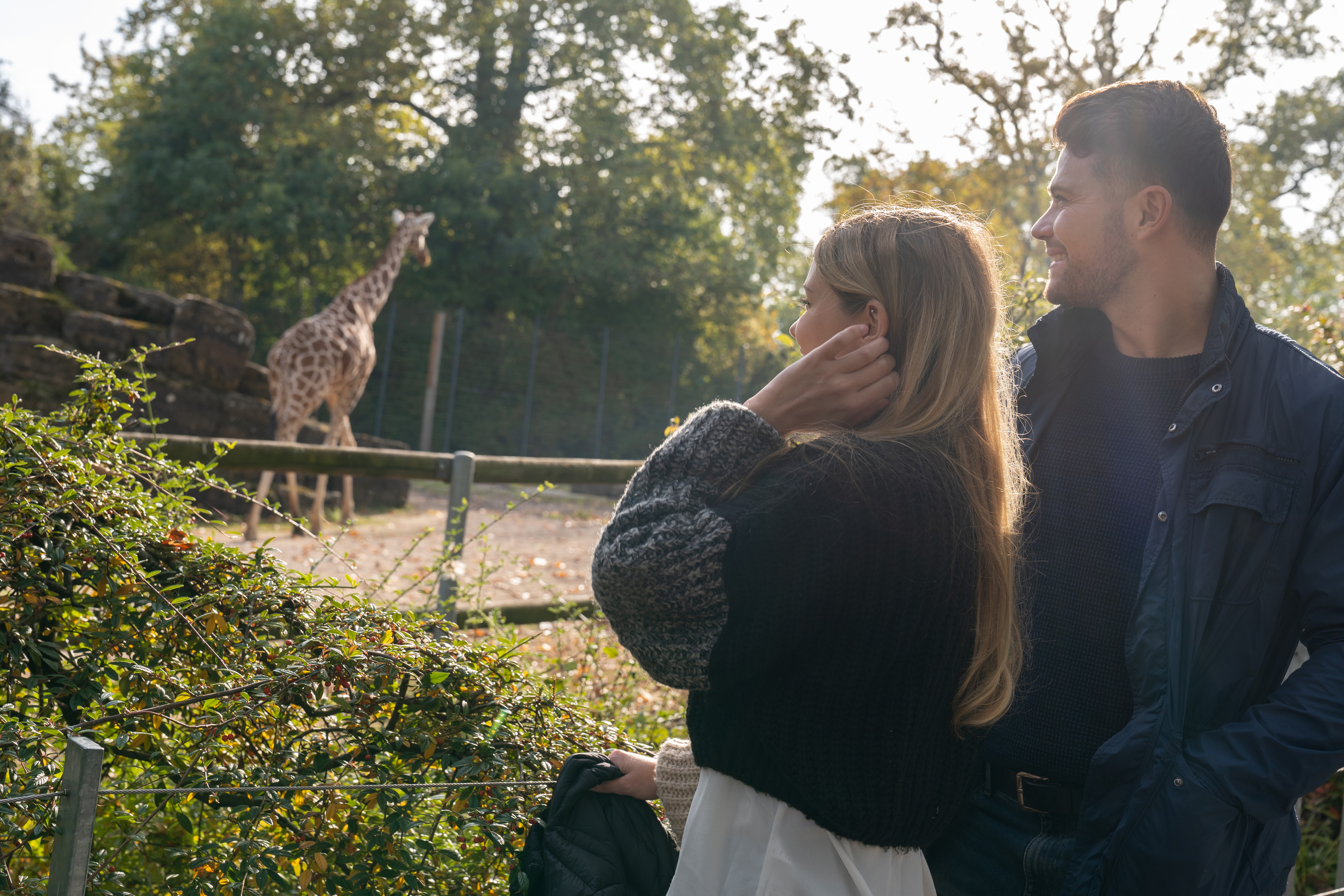The “Wilhelma” Zoological and Botanical Gardens
The combination of historical ambience, tropical plants and animals make a visit to the Wilhelma a very special experience, no matter what the time of year.
Germany's only zoological and botanical gardens reflects more than 175 years of history. The park was originally commissioned by King Wilhelm I of Württemberg and laid out in 1842 by Karl-Ludwig von Zanth in the Moorish style. In 1846 the Wilhelma’s inauguration celebrated the marriage of Crown Prince Karl to Princess Olga of Russia, daughter of the Tsar. After the death of the king, the Wilhelma – then still a botanical show garden – was made accessible to the general public in 1880. It wasn't until after the Second World War that the first animals came to the Wilhelma. Today the “Alhambra on the Neckar”, as the Wilhelma is often referred to, has some 11,000 animals from 1,200 different species, making it one of the most diverse zoos in the world, and one which represents a cross-section from every climatic zone on earth.
There's also a valuable collection of plants, comprising some 8,500 species. The face of the park changes with the seasons in the course of the year.
The impressions created by the magnolias, summer flowers, a water lily pond in bloom, Mediterranean plants, palms and magnificent old trees are quite enchanting. In the greenhouses botany enthusiasts can admire plants from all corners of the globe. The Wilhelma is particularly famous for its bromelias, orchids, camellias, fuchsias and azaleas, as well as cacti and other succulents.
Lovers of creatures great and small can watch bears, vultures, giraffes, sloths, tigers, okapis, rhinoceros, parrots, elephants, flamingos, apes, zebras and lots more besides at the Wilhelma. Many of these animals are threatened by extinction in their natural habitats.
Eleven animal species from Australia have been on display in the new Terra Australis since summer 2023. As most of the inhabitants of Terra Australis are nocturnal mammals, the day-night rhythm has been reversed in the nocturnal animal area. This means that visitors can also observe the animals during the day under subdued moonlight lighting. These include koalas, which are only kept in three other zoos in Germany, and quokkas, who are only found in Stuttgart in Europe.
The Ape House is home to the gorillas and bonobos. The great apes have over 4,400 square metres at their disposal. When planning the enclosure, particular attention was paid to fulfilling the animals’ requirements and to guaranteeing species-appropriate conditions. The barrier-free visitor area provides fascinating and innovative insights into the life of the apes, supplemented by numerous additional features, for example about the animals' behaviour and needs: large-format information boards, models of their hands, feet and skulls, interactive display terminals and a visitor cinema. As well as the extensive outdoor section, there's also the popular animals' nursery inside the building, where orphaned or abandoned baby apes are reared under expert care and in the company of their fellows.
One of the Wilhelma's gems is the Aquarium, a veritable crowd puller. Underwater habitats, from the North Sea to a coral reef and from the Neckar to the Murray River are represented by the corresponding fish, invertebrates and water plants found there. The adjoining Terrarium is home to all manner of bizarre and poisonous creatures and thrills visitors with its crocodile hall.
The Amazon House was completed around the turn of the millennium and is home to both animals and plants. Its hot, humid atmosphere creates the perfect illusion of a South American rain forest. Some ten species of birds can be seen in free flight here, while gold-headed lion tamarins and white-faced sakis amuse themselves in their enclosures. Iguanas, turtles, snakes and frogs are kept in terrariums so that visitors can spot them more easily. Through a large pane of glass the underwater world of the Amazon becomes visible: broad-snouted caymans, toad-headed turtles and giant fish all suddenly appear up close.
Between the Moorish Villa and today's Aquarium lies the true heart of the Wilhelma, and for many people the most beautiful place in the whole park: the Moorish Garden. The historical lamps, large staircase, many sculptures and the landscaped layout of the paths, fountains and plants make this a real showpiece.
All year round the Wilhelma has an extensive programme on offer for families, including a selection of guided tours with a glimpse behind the scenes, encounters with animals, and theme days with visitor participation. In the winter months the Wilhelma is transformed into a romantic fairy-tale wonderland. The approximately two-kilometre-long circular walk through the Christmas Garden takes visitors past illuminated animal sculptures, for example, and the laser animations in the grove of redwood trees.
Additional information under: www.wilhelma.de/en
